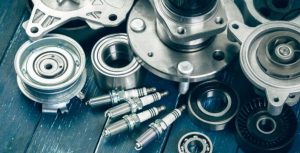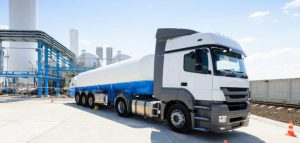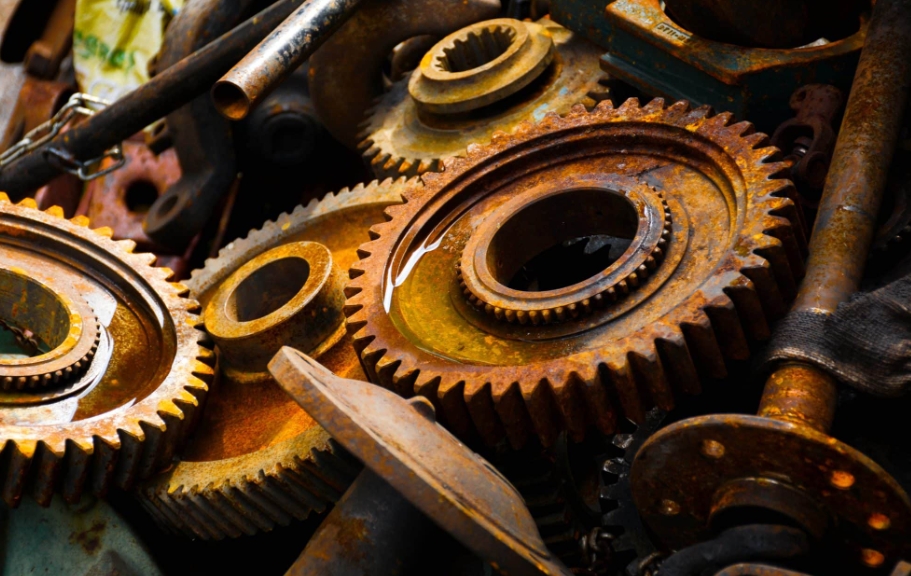
How to remove rust from metal?
Cleaning and protecting metal mechanical parts from rust is a common operation but also necessary in the industry to ensure the proper functioning of the parts and guarantee their durability. Many solutions using chemical and mechanical processes exist today to derust metal parts. However, in addition to being often time-consuming, they generate risks for: the health and safety of operators, damage to parts and the environment.
How does rust form?
Rust forms as a result of a so-called oxidation-reduction reaction, which is a slow chemical process involving the iron molecule (whether in pure iron or an iron-based alloy), present in the metal, exposed to air oxygen and water. It therefore intervenes when the metal is exposed to humidity for a long time.
Certain circumstances will also favor the appearance of rust, such as:
- Different oxygen concentration conditions such as at sea, where the presence of salt water further accelerates the process
- The presence of certain metals such as iron which is very easy to oxidize, unlike lead or stainless steel.
As soon as oxidation appears, it corrodes the metal, expands it and causes it to change its appearance. For example, copper turns orange then green on contact with oxidation. Then the oxidation will gradually spread, weakening the metal part until it punctures and crumbles.
Why remove rust from your metal parts?
The consequences of rust forming on metal parts are significant in all industries.
The embrittlement of mechanical parts due to rust can, under the pressure of production processes, reach their breaking point and cause stoppages in production lines or breakdowns in vehicles. This can lead to significant intervention costs, but also in terms of production losses, as well as leading to risky situations for the safety of operators.
The effects of rust thus lead to overconsumption of iron and steel production: more than 15% of steel production would serve only to replace parts damaged by rust, which can represent large sums for the company.
The consequences on the environment are also considerable in terms of the generation of waste from excessively damaged metal parts.
Implementing effective methods of rust removal as part of preventive maintenance along with protective coating can therefore help to ensure the durability of parts, saving money and saving new replacement purchases. expensive equipment.
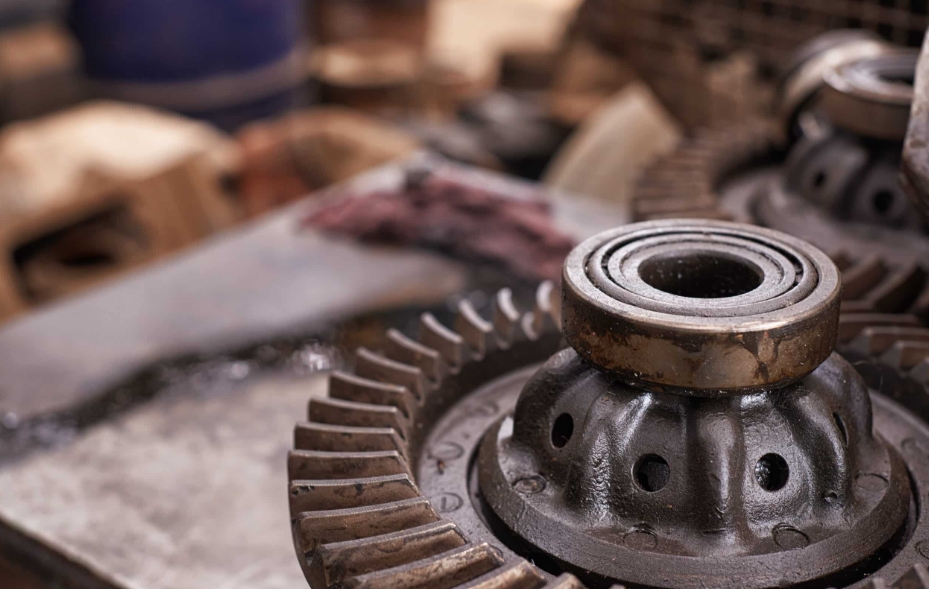
How to effectively remove rust from metal?
A rustproofing process in industry always includes a process for cleaning mechanical parts and tools upstream, which are generally covered in grease and dust. The parts also require impeccable cleaning so that the adhesion of the protective coating takes place in the best conditions.
Removing rust from metal parts is a complicated task, especially when the surface of the part is not flat.
Fortunately, there are currently many solutions for derusting and degreasing metal parts:
- some using chemicals such as phosphoric or hydrochloric acid baths
- some of the multi-step mechanical processes such as sandblasting, shot-blasting or mechanical brushing followed by intense polishing of the parts
- or other automated industrial cleaning machines such as ultrasonic tanks or immersion machines.
Chemical rust removal process
A chemical deoxidation process based on phosphoric acid, hydrochloric acid or caustic soda makes it easy to remove rust but presents many risks, both for the operators and for the parts.
These products will stop oxidation and remove rust but are highly corrosive and irritating to the skin, eyes, respiratory and digestive tracts if exposed. It is therefore necessary to consult the Safety Data Sheets (SDS) of these products before handling them as a precaution.
They are also dangerous for the environment, especially for the fauna and flora of aquatic environments because they increase the pH of waterways. They are also very aggressive on metal parts and risk damaging them, in particular for precision mechanics where these processes are to be banned. It is also mandatory to trace the end of life of these products according to the regulations.
Mechanical process to derust mechanical parts
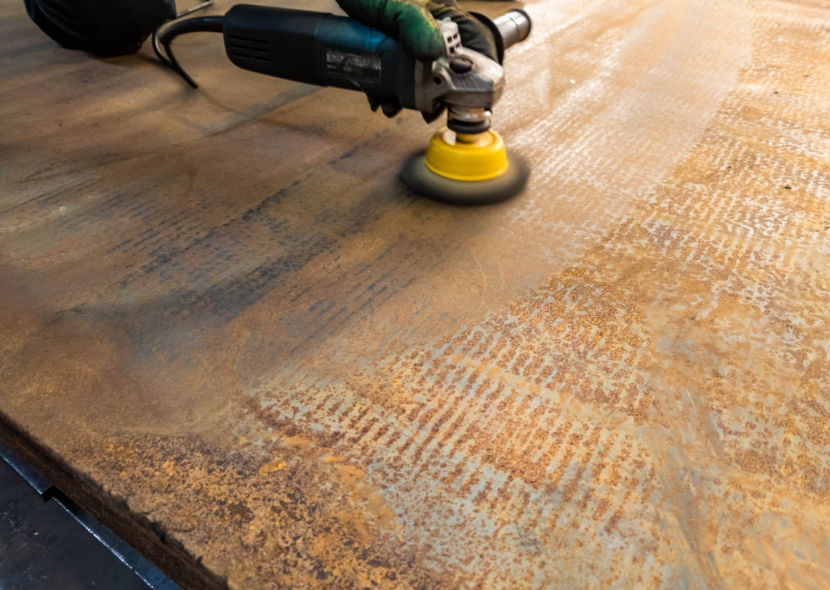
The mechanical way using pickling techniques is the most common way to remove rust from mechanical parts, although they can be time consuming and often tedious for operators.
This includes sandblasting and shot-blasting, which consists of projecting jets of sand or high-pressure iron shot onto metal parts. These surface treatment operations expose operators to risks with the exposure of dust generated and dispersed in the air, which can cause respiratory tract disorders. High-pressure abrasive blasting can also cause severe pitting to appear on the surface of the metal and damage the more delicate parts of the components beyond repair.
There are also techniques using abrasive sandpaper or metal radial brushes but they cause traces of more or less deep grooves in the metal.
All these mechanical operations must often be followed by intensive polishing to achieve a satisfactory finish of the metal parts in order to be able to coat them with protection.
Process using industrial cleaning machines
Faster, simpler, more efficient, industrial cleaning machines can both clean grease and dust from your metal parts but also remove rust effectively.
For this, ultrasonic cleaners are the best solution for degreasing and completely eliminating rust while preserving metal parts, even their most fragile elements. Ultrasounds form pressure variations which propagate in materials immersed in a liquid. These high-frequency vibrations produce millions of tiny microscopic bubbles whose particularity is to immediately implode on contact with the part, releasing high energy which causes the oxides to detach even in inaccessible corners. At the same time, the implosion of these bubbles generates movements in the bath, conducive to cleaning. Thanks to fully automated cleaning cycles, operators can also concentrate on other key tasks.
Cleaning machines using immersion/agitation baths can also be used to remove rust, while keeping the parts intact and without operator intervention.
